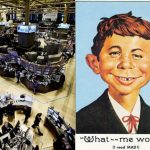The US President Trump talked down the USD and berated the FOMC for hiking yesterday and that remains the news today. Repeating news usually doesn’t move markets but for the fact that positions were too comfortably long USD and that markets are thin given the summer holidays. Markets didn’t get a lot of other news either and so the focus is on geopolitical games still more than economic progress.The comparisons of Trump to Erdogan dominate analysis with the clear difference between US and Turkey being the independence of the FOMC. Trump can’t get rid of Powel. This begs the question of what comes out of the Jackson Hole Symposium from the Fed Chair as many expect some thought shift on the role of emerging market disruptions, the USD and policy. If the path forward for US rates is 4% 10-year bonds, the pain trade abroad will be worse than at home and this is the point. Trump’s talking down the USD has had some unintended consequences that show the limits to his bluster –
1) Oil is higher, which hits the consumer harder and leaves focus on US supply next.
2) CNY is higher, which makes the arguments of FX depreciation as a tool in trade talks less convincing.
3) US debt fears rise – with funding of US deficits in play as the talking down of the USD puts the safe-haven status at risk.
This puts the US 10-year yield back as the key driver for attention as to whether the Trump blast really matters. Talking down your own currency is usually seen as a path to crisis unless it’s followed by real action. This is the risk for September as the President grows increasingly worried about the US mid-term elections and the need for growth to support his voter base. The September 10-year bond futures look to be at the limit with 121 stops against 118.50 retests or yields 2.8% to 3.0% again in play.

Question for the Day: Are we back to US mid-term elections as a key focus? The focus shift in a quiet week has been notable overnight with the rise of US debt worries and the mid-term elections as a backdrop. The US deficit and the link of growth to keeping it in check remains a problem for the USD today. This has been one factor resurrected from the February turnabout. The stimulus from the US tax reform remains in play and part of the discussion for Jackson Hole. Most now expect a Congress controlled by Democrats leaving the US in gridlock with less hope on action and budget controls. In fact, many now see an October government shutdown risk as part of the US political gaming into the November vote.

What is different is the level of US stocks which the S&P500 less than 0.5% from new record highs. The role of the USD in financial conditions mixes with the level of stocks. The outlook for 2H growth matters to the vote and to the markets. The tightening of financial conditions seems to correlate well with the manufacturing ISM as Nordea Bank research notes.














Leave A Comment